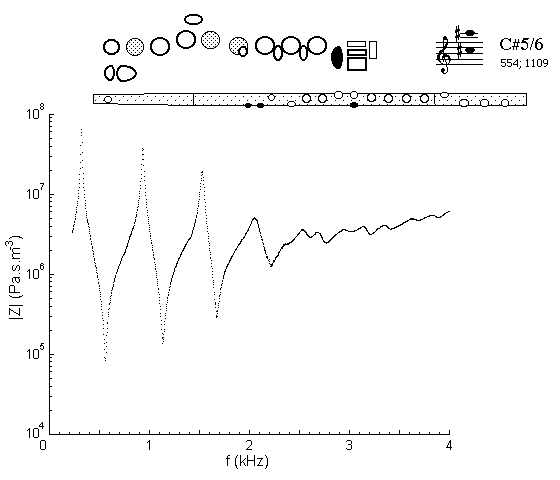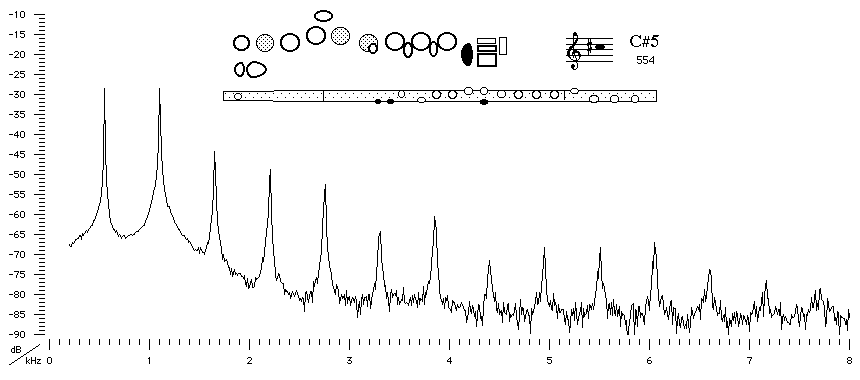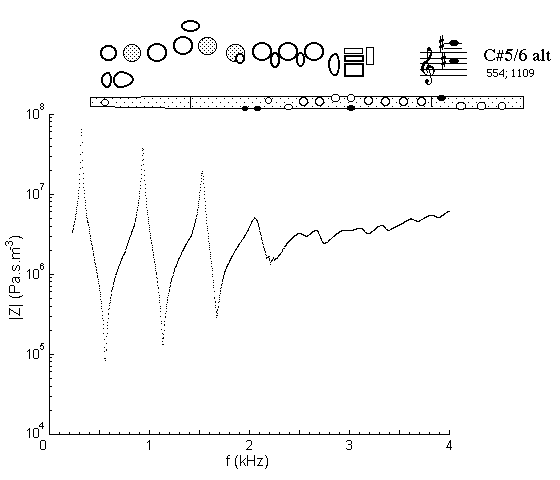| Acoustics of baroque, classical and modern flutes |
modern flute
|
C#5 |

|
Fingering Acoustic schematic Non-specialist introduction
to acoustic impedance |
From E4 to C#5 and E5 to C#6, each standard fingering serves for two notes. The flutist uses the same fingering for C#5 and C#6, but changes the speed, length and shape of the jet. The first three minima can be played. This note is acoustically different from others in the first register because the highest tone hole opened is smaller than the other tone holes (not counting the two trill/register keys). This is because it also serves as a register hole for D5, D#5, D6 and A6. The latter use largely determines its position, and its size is chosen to tune C#. The acoustic difference in this note is enhanced by it being the last note below the change in register: compare the impedance spectrum with that for D5.

Sound spectrum
of a modern flute with a B foot played using fingering for C#5.
![]()
![]()
![]()
![]()
![]() You can hear C#5
played by Geoffrey Collins.
You can hear C#5
played by Geoffrey Collins.
Alternative Fingering |
modern flute B foot |
 |
Fingering Acoustic schematic Non-specialist introduction
to acoustic impedance |
Impedance spectrum of a modern flute with a B foot measured at the embouchure hole using alternative fingering for C#5.
Comparing with the standard fingering, one sees that the effect of closing a hole downstream from 10 open holes is very small at frequencies below the tone-hole filtering limit of about 2.5 kHz, but that there are discernible differences at higher frequencies.
| Acoustic measurements are available for these flutes - modern B, modern C, classical C, classical D, classical flared, baroque Sound clips are available for modern B, classical flared and baroque |
To compare flutes, it is easiest to open a separate browser window for each instrument. |